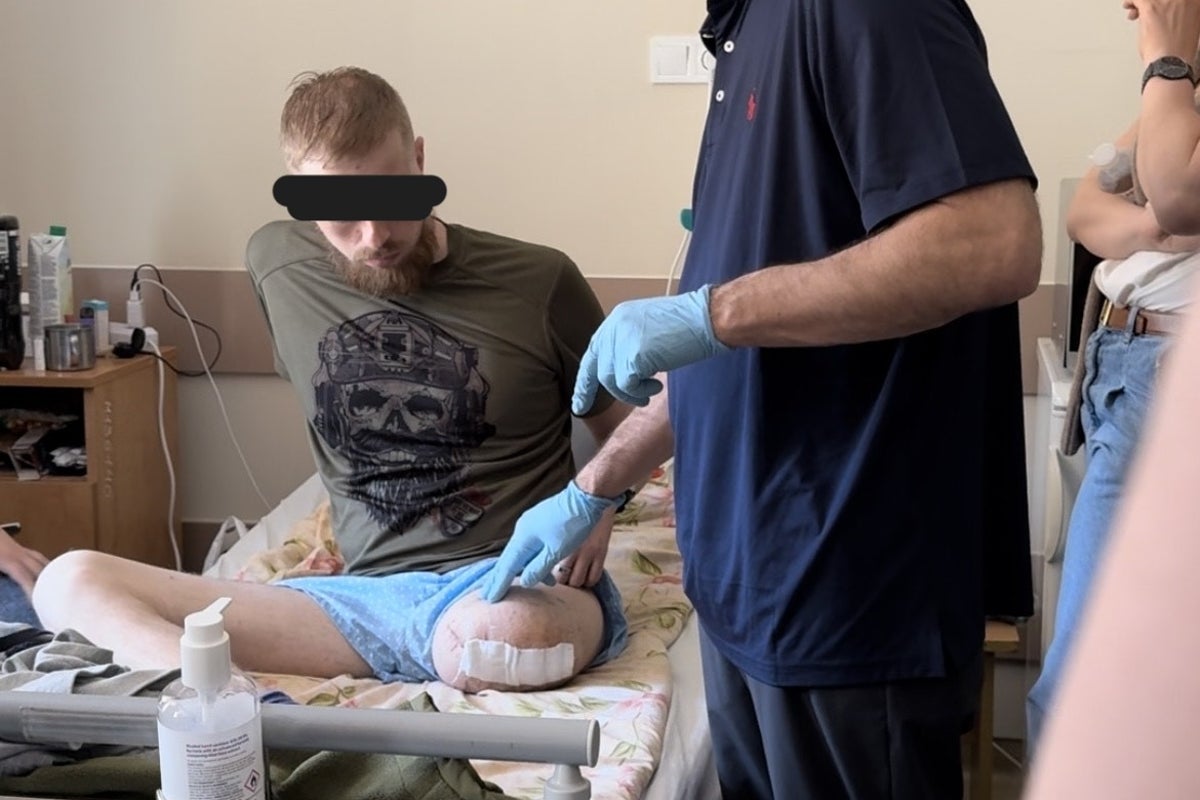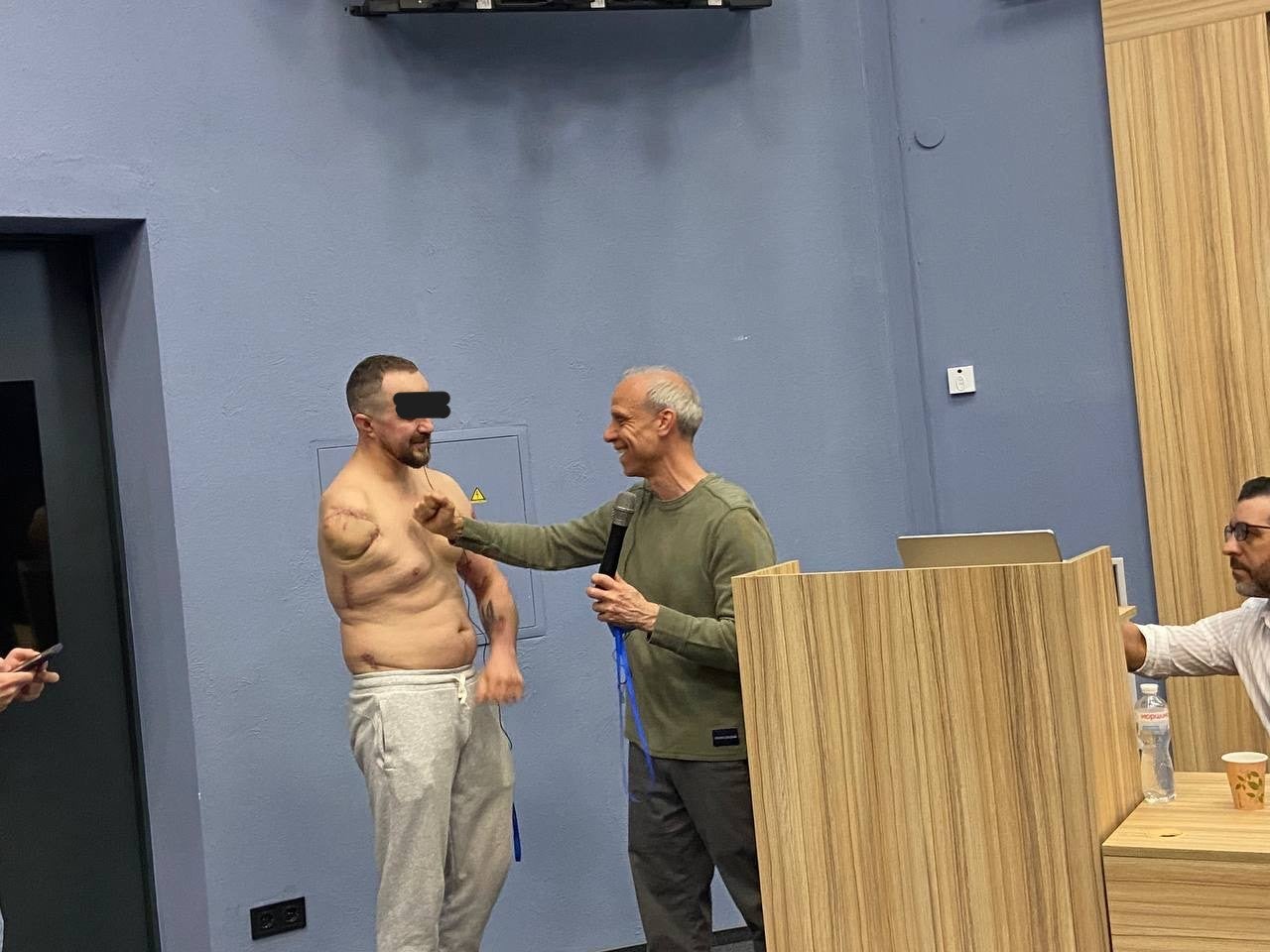
Botox is widely known to iron out wrinkles, but it could also help ease phantom limb pain in Ukrainian war amputees, researchers have found.
It is estimated that more than 100,000 soldiers and civilians have lost limbs since Russia’s full-scale invasion in 2022.
Most amputees experience some degree of stump pain or "phantom limb" pain, where the patient can still feel real pain in the amputated limb.
But a study led by Northwestern Medicine and Ukrainian physicians, which involved 160 amputees treated at two hospitals in western Ukraine between 2022 and 2024, revealed this pain could be significantly reduced using Botox.
“Our results show that botulinum toxin potentially could be a powerful short-term tool for treating post-amputation pain when used alongside comprehensive medical and surgical care,” said co-author Dr Roman Smolynets, an anesthesiologist and intensive care specialist at the Multidisciplinary Clinical Hospital of Emergency and Intensive Care in Lviv, Ukraine.

“It could be another step toward helping amputees live with less pain and more dignity. But always as an additional point to comprehensive medical and surgical care, not as a monotherapy.”
Botox, the brand name for the injectable drug botulinum toxin, is known for its use in cosmetic procedures to freeze muscles by blocking the nerve signals that cause them to contract.
However, it is also used to reduce chronic pain, migraines and muscle disorders.
In the study, researchers injected botulinum toxin in a new way by injecting it directly around painful nerve endings and surrounding soft tissues, rather than into muscle or skin.
Scientists said this helped to quiet nerve activity and local inflammation. It could also help relieve other types of nerve pain, such as shingles-related pain, carpal tunnel syndrome and pain following surgeries like mastectomy, researchers suggested.

The study participants were amputees treated at the First Medical Union of Lviv or Ivano-Frankivsk Regional Hospital.
One group of participants received botulinum toxin injections around painful nerve endings, called neuromas, in addition to standard medical and physical therapy.
The other group were given medical and surgical treatment, including nerve blocks, physical and psychological therapy and medication.
Pain levels were assessed at the start of treatment and after three months on a 10-point scale, taking note of phantom limb pain and pain in the stump.
Results showed that after one month, the botulinum toxin group experienced an average reduction of four points in phantom limb pain on a 10-point scale, compared with just one point among patients in the comparison group.
After one month, 69 per cent of patients who received botulinum toxin noticed improvements in phantom limb pain, versus just 43 per cent in the other group on traditional treatments.
But these benefits only last three months, consistent with previous research showing that botulinum toxin’s pain-relieving effects typically last about three months.
“As a retired colonel and the father of an infantry soldier who could be deployed in future conflicts and suffered from traumatic brain injury while at the US Military Academy, this research carries special personal meaning for me,” said senior study author Dr Steven Cohen, a professor of anesthesiology at Northwestern University Feinberg School of Medicine.
Dr Cohen and his colleagues stressed the need for larger trials to confirm their findings, and aim to explore whether repeat botulinum toxin injections over time could produce sustained benefits for post-amputation pain.
Russia inflicts terror on Ukrainian soil while Trump toys with Zelensky over land
Two people hospitalized from counterfeit Botox procedures, health officials say
Covid jab sparks immune response to fight cancer, study finds
‘I was diagnosed with a life-changing kidney condition through the NHS app’
Cuts to world’s biggest malaria fund risk lives of 750,000 children
Woman plays clarinet during surgery for Parkinson’s – and sees instant results







